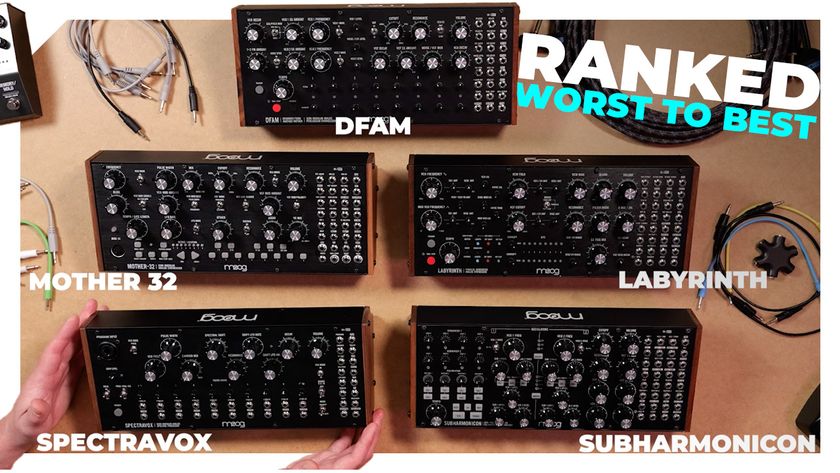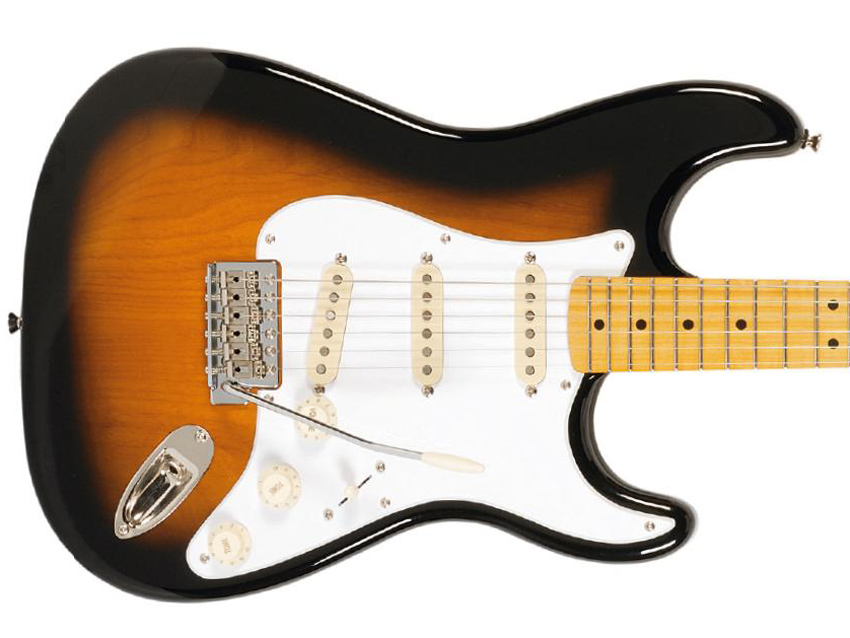MusicRadar Verdict
If you can't stretch to the Fender Classic Series '50s Stratocaster, this is definitely the guitar to buy.
Pros
- +
Great looks. Superb neck (we even get some figure). Cool vintage-flavoured tones.
Cons
- -
The scratchplate is too thick.
MusicRadar's got your back

Squier Classic Vibe Strat '50s

Squier Classic Vibe Strat '50s

Squier Classic Vibe Strat '50s
The first Squier JV - or Japanese Vintage - guitars hit the streets in 1982 and the Strats in particular proved popular immediately thanks to excellent quality and American pickups. Fast-forward to 2008 and here is latest range of Far Eastern (Chinese in this case) Squiers: the Classic Vibe series.
On first glance you might assume that Squier's Classic Vibe guitars are intended to be the first foray into a selection of Squier-branded vintage reissues, but the idea is rather focused more on the intention to hark back to those halcyon early eighties days of the JV and recapture that vibe.
Classic Vibe Stratocaster '50s
At the time of writing, Squier is offering this guitar in just one finish. In this case the mix of black and honey-brown on this two-tone sunburst really has been superbly applied, especially considering the price point. This is assisted no end by the subtle yet eye-catching grain of the alder body.
If we were to be very critical, we'd be obliged to point out the overly hefty scratchplate - almost twice as thick as that of a 1989 Japanese Fender Strat we're using as a comparison - but it is affixed with eight, historically requisite, screws.
A five-way switch controls three vintage-style and aged-covered Alnico III-loaded single-coils alongside a single volume and two tone pots in the familiar way.
Of course, retrofitting higher-grade pickups would simply be a case of spending a few minutes with a soldering iron and screwdriver, but changing out the bridge might prove a tad more complex because this vintage-style vibrato is the more tightly string-spaced version - smaller than that used on American vintage-style Fenders, so the body mounting holes differ.
"The '50s Strat looks the part, plays wonderfully and sounds authentic too."
That said, the guitar is nicely set-up out of the box, and the bridge feels of good quality, so who really needs to upgrade?
The neck is constructed from a single piece of high-quality maple and this example even glimmers with a shimmer of figure. The shaping behind the headstock wouldn't be out of place on a full-blown American instrument and the 21 medium frets make the guitar ridiculously easy to play. All up, from an initial look and a little while playing, this guitar could cost a lot more money.
Sounds
Hear each pickup selection in action, beginning with the bridge unit:
You'd expect, if everything else is the same, single-coils based around Alnico III magnetsto possess a warmer, more subdued tone than those with Alnico V and, when comparing the '50s Strat with its '60s counterpart in the same range, the zing and trebly bite of the latter is apparent.
Positions two and four are more crystalline and brittle - in a good way - and, with additional gain, the bridge and neck coils do sing in the traditional manner. In this scenario, Alnico IIIs do tend to drive at lower gains, and they give a fuller tone that also benefits from a slightly improved level of warmth. In other words, it gives a markedly more vintage sounding performance.
Although Squier's Standard Series (from £209) represents good value, we must now suggest that the Classic Vibe range has become the initial port of call if you're after your first Strat.
The '50s Strat looks the part, plays wonderfully and sounds authentic too. Of course, the guitar is ripe for upgrading and its construction is more than robust enough to allow for both hardware and pickup upgrades.
The truth is, however, that even accomplished players may not need to carry out such tasks - the overall quality of the existing fittings is well up to par. There really is no excuse whatsoever for not owning a Fender-style electric with added mojo and vibe.
Simon Bradley is a guitar and especially rock guitar expert who worked for Guitarist magazine and has in the past contributed to world-leading music and guitar titles like MusicRadar (obviously), Guitarist, Guitar World and Louder. What he doesn't know about Brian May's playing and, especially, the Red Special, isn't worth knowing.

Ranked: Moog’s semi-modular ‘Mother’ synths from worst to best

“If it wasn’t for that song, that would have been the end of the band”: How one track’s sudden gear-switch led Coldplay into their imperial phase

“He was like, ‘You’ve got it all wrong, man": Mumford & Sons reveal what Neil Young told them about the way they were approaching their live shows and album recordings










